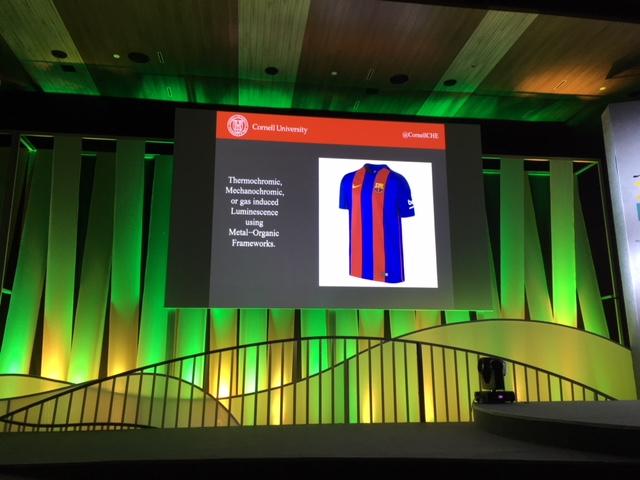Scientist explains how T-shirts will talk to people
During your daily routines, your T-shirt will change color to tell you your blood pressure has gone up, and will change color again to warn you that you lack more physical activities, and then will change color again and warn you that you have not sunbathed enough or have not eaten well. Is that all? No. Your T-shirt may also send information to your physician on your serum levels and warn that you are about to have a heart attack! Yes, researchers from the Cornell University, USA, together with several designers, have already been testing it. “This is a schizophrenic laboratory, because we gather fashion designers full of crazy ideas and scientists who feel challenged to make them a reality,” explained scientist and professor Juan Hinestroza, who coordinates the textile technology development lab at the Cornell University and was invited to give a lecture on the second day (10/18) of IAF’S World Fashion Convention, held in Rio de Janeiro and organized by IAF/Abit.
Those scientists’ main research line is nanolayers (layers of chemical microelements at a nano dimension) added to fibers, especially cotton. “I am Colombian and I love cotton. I have always wondered how to aggregate further properties to that fiber and that is what we are doing today.”
The creations of Mr. Hinestroza’s team include garments that change color according to the size and proximity of particles (both in the form of molecules and as atoms placed inside the cotton mesh) of elements such as Gold, Platinum, Vanadium, and Silver, among others. French tennis players have been testing the prototypes: tennis balls change color according to their trajectory and the force employed to throw them, thus warning athletes where they must improve their skills; their bandanas also change color when sweat points to a possible dehydration or low sodium. Soccer players from the Barcelona team have also been performing other tests, where soccer jerseys also change color according to the physical or mechanical shock they receive, and jerseys might even show to referees that a player has committed a fault or scored a goal with his arm.
Many research lines are being developed in that lab, led by professor Hinestroza, such as placing transistors in garments, chronological chemical layers that release an insecticide as previously programmed, meshes that filter or capture polluting gases, and all that while employing water-based chemical elements and processes. And could all that become commercially viable? According to Mr. Hinestroza, some of them yes, indeed. “I am lucky to be a scientist and not have to be concerned with cost and viability. My challenge is to develop scientific experiments. But, I am sure many of them are viable. I have visited some companies and realized their laboratories are basically a reproduction of ours, because our basic element is water. It will apply to businessmen to see what is viable or not. I just have to try and find solutions to crazy ideas. And if you have one, talk to us,” concluded Mr. Hinestroza.
abit, IAF, IAF Brasil

